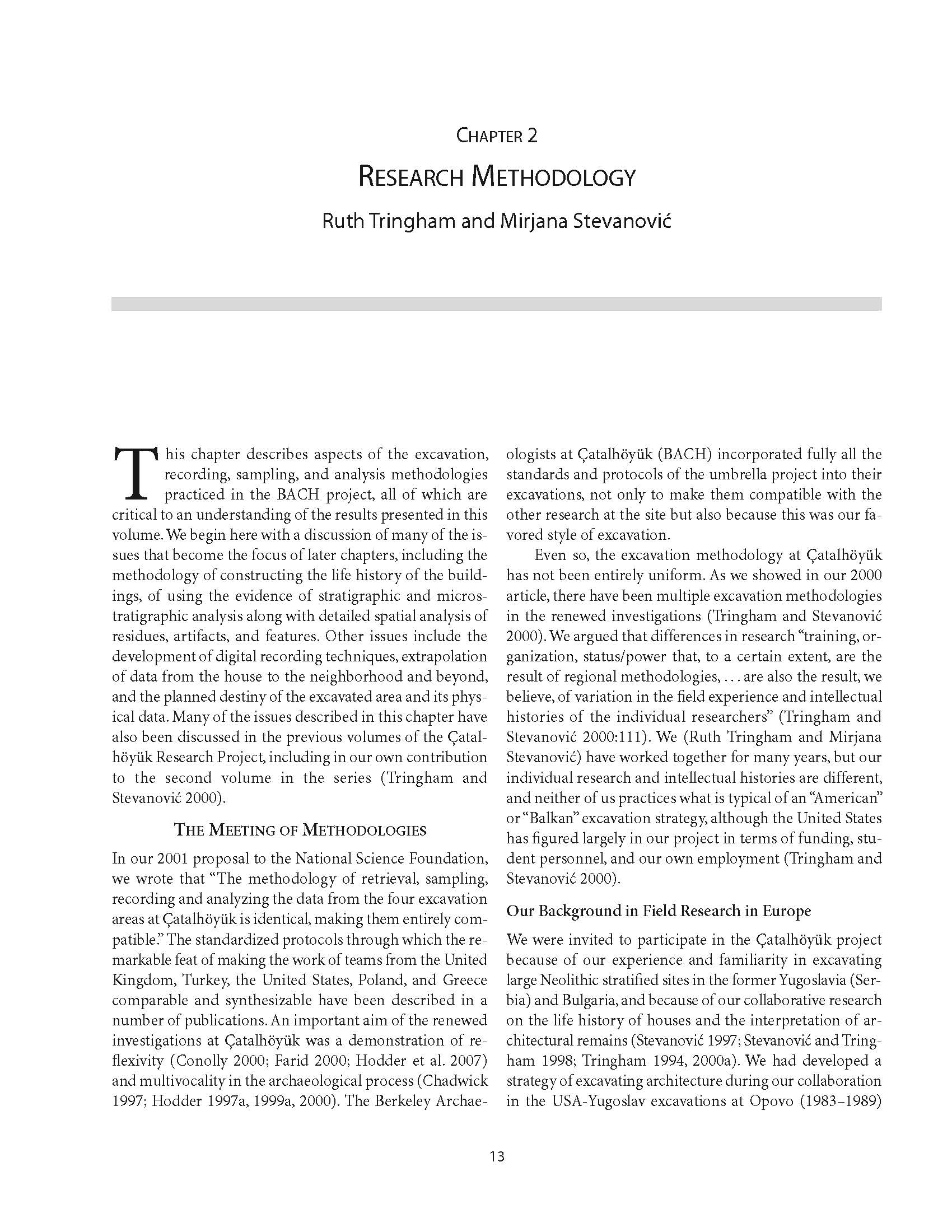
Research Methodology in the BACH Area (2012)
with Mirjana Stevanovic
This chapter begins with the process by which Mirjana Stevanovic and I adapted our excavation and recording strategy, that we developed in projects investigating wattle-and-daub buildings in Serbia, to the Çatalhöyük project with its intensively layered mud-brick buildings. Moreover, a further challenge was to adapt to the single context excavation strategy and reflexive methodology practiced by the umbrella Çatalhöyük Research Project. Some of these challenges were described in greater detail in our collaborative chapter in Ian Hodder (ed) 2000 Towards reflexive method in archaeology: the example at Çatalhöyük. By the time of publication of this chapter, the process of addressing these challenges – which true to the aims of Reflexive Archaeology is made explicit – had resolved into a collaboration in which the methodology of the different teams was approaching seamless. The BACH team made a number of contributions to the development of the archaeological methodology practiced at Çatalhöyük, but in this chapter we forefront our focus on life-histories of buildings, digital media recording and management, method of roof documentation.
Abstract
This chapter describes aspects of the excavation, recording and sampling methodologies practiced in the BACH project. We introduce issues that become the focus of later chapters, including the methodology of constructing the life-history of the buildings, using the evidence of stratigraphic and micro-stratigraphic analysis and detailed spatial analysis of residues, artifacts and features. Other issues include the development of digital recording techniques, extrapolation of data from the house to the neighborhood and beyond, and the planned destiny of the excavated area and its physical data. We discuss our acceptance of the standard practices of excavation, recording, and reflexive archaeology at Çatalhöyük, drawing attention at the same time to differences created by our backgrounds in the archaeology of Southeast Europe. Differences include organization of labor and a few deviations from strict single-context excavation. We describe in detail the process and personnel of excavation, recording, documentation, sampling, analysis, and interpretation used in the BACH Areas, and how these changed through time.
Citation
Tringham, Ruth and Mirjana Stevanovic (2012) Research Methodology. In Last House on the Hill: BACH Area Reports from Çatalhöyük, Turkey (Çatalhöyük vol.11), edited by R. Tringham and M. Stevanovic, pp. 13-29. Cotsen Institute of Archaeology Publications, UCLA, Los Angeles, CA.
